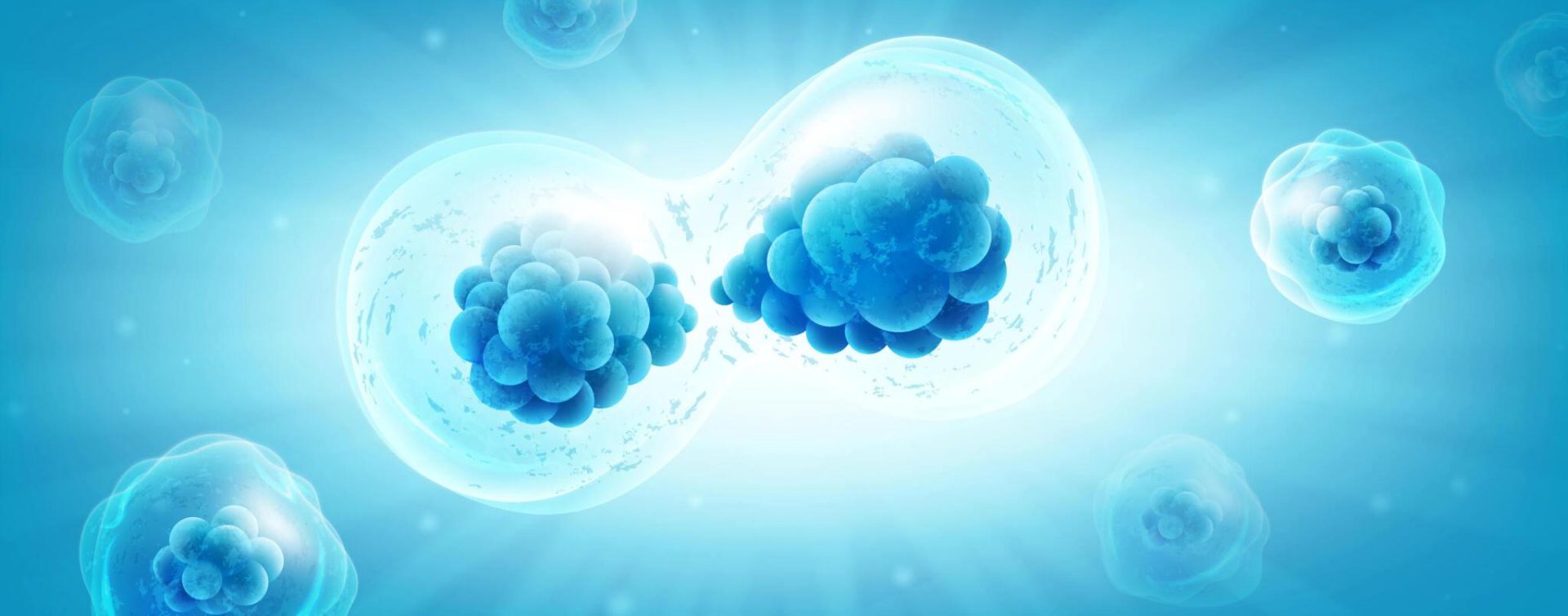Stem Cell Therapy Benefits: A Revolutionary Cure for Hip Bursitis
Hip bursitis commonly affects women. A study was conducted on patients suffering from inflammatory disorders. The total number of patients was 877. 177 out of them were diagnosed with hip bursitis.
1.8 percent out of 1000 patients are affected by hip bursitis annually.
Bursitis impacts people from all age groups. However, the athletes experience the condition more than normal people. Nevertheless, middle-aged men are mostly affected.
Bursitis of the hip causes degradation of the bones, muscles, tendons, and ligaments. Conditions such as rheumatoid arthritis and diabetes aggravate the inflammation.
Sports injuries and infections increase the chances of hip bursitis.
Stem cells offer therapeutic treatment to relieve pain from bursitis.
This blog explores the potential of novel mesenchymal stem cells (MSCs). Also, we will check out how it helps to repair hip bursitis for patients of all age groups.
Overview of Hip Bursitis
Bursitis is a condition where the bursa is swollen due to inflammation. The bursa is a sac-like structure found in nearly 150 sites within the body.
These components enable the movement of the musculoskeletal system. It helps to create a cushion between the tissues and bones so that they do not collide against each other.
The friction of the bursa or inflammation causes bursitis. The condition is highly painful and limits your mobility. Connective tissues filled with synovial fluid compose the bursae.
Bacterial inflammation causes infections and fever. The presence of more fluid than usual in the bursa is called effusion. It leads to external swelling and internal inflammation.
The bursitis area can appear red and warm. It is easy to diagnose an inflamed bursae. They are painful and sensitive to pressure.
Diagnosis
Here are some common tests to detect bursitis of the hips –
- Physical exams such as standing on the affected leg to determine the tenderness of the hip.
- Imaging tests such as X-rays and MRIs to detect the cause of hip pain.
- An aspiration test where doctors apply a needle to remove the excess fluid from the bursa and check for infections.
- Blood tests may be necessary to detect additional complications.
Causes
The causes of hip bursitis are –
- Activity-related injury – Excessive running, cycling, or standing for prolonged periods can result in hip bursitis.
- Injuries – Accidents, falls, or other fatal blows irritate the bursa and cause bursitis.
- Arthropathic causes – Joint injuries due to rheumatoid arthritis, osteoarthritis, and lupus heighten the bursitis risks.
- Bone spurs – An extended bony structure near the joint end of the bone can develop bursitis. Moreover, calcium deposits to the bone also aggravate the condition.
- Post-surgical trauma – Fractures and hip replacement surgeries increase the risk the hip bursitis.
- Imbalanced muscles – Bodily imbalance stresses the hip muscles and causes bursitis.
- Obesity – Bursitis can develop if a patient is obese. Body balance and muscle strength are significantly affected.
- Spinal cord problems – Problems in the spine such as scoliosis enhance the scope of hip bursitis.
Symptoms
Hip bursitis symptoms are –
- Sharpened pain in the hip area that worsens while sitting or lying down. Patients with hip bursitis mostly experience pain on the outside of the hip and the side of the upper thighs.
- Repetitive motions increase the pain in hip bursitis patients. Climbing stairs, cycling, and heavy lifting are such motions.
- Inflammation causes swelling and redness in the affected region. Extra synovial fluid in the sacs aggravates the condition.
- Stiffness of the hip joints.
- Reduced mobility or immobility of the affected area. This restricts walking and other activities.
- A clicking or aching sensation on the side of the knee and at the side of the thigh.
NOTE: The symptoms of the disease vary depending on the severity of the condition. So, each hip bursitis patient will demonstrate different symptoms.
Complications
Some of the complications related to hip bursitis include –
- Chronic pain due to inflammation and swelling
- Reduced mobility of the joints leading to muscle loss in the affected area
- Thickening of the bursa due to swelling that limits mobility
- Calcium build-up in the soft tissues of the hip joint that can permanently impair movement
- Sleep disturbances for patients who sleep on their sides
- Limping due to an imbalance of the hip joints
- Snapping sounds of the hip tendon increase the pain
Who is at Risk?
The risk of hip bursitis is maximum for –
- Athletes with strained bursa
- Smokers who delay tissue healing
- Bedbound patients with restricted mobility and extra pressure on the same joints of the body
- Elderly and middle-aged people who had accidents and got badly hurt around the joints
- People with spinal cord problems
- Patients who had hip-related surgeries
- Overweight people who stress their hip joints
Read Also: How Stem Cell Therapy Can Treat Avascular Necrosis of the Hip
All About Stem Cells
MSCs are extracted from human umbilical cord tissues (Wharton’s Jelly). These cells are multipotent. HUCT-MSCs have several properties. Stem cells are anti-inflammatory and immunomodulatory. Furthermore, stem cells have differentiation and migration abilities. Most importantly, it enables self-renewal of damaged tissues and cells. Additionally, MSCs promote the production of cytokines and growth factors.
Regenerative properties and minimally invasive treatment methods make stem cells a popular healthcare choice. MSCs restore the pelvic joint’s self-healing abilities.
Stem cells transform into different cells of the body. Moreover, they migrate to different areas affected due to diseases or injuries. It promotes healing from several conditions. Various diseases affect different cells of the body. Consequently, the organ functions are limited.
There are different types of stem cells. However, MSCs are prevalently used for treatment due to various properties.
Administration Methods
The methods for administering stem cell therapy include –
- Intravenous (IV) – The MSCs are injected into the veins of the patients. It is given through infusions.
- Intraarticular (IA) – Injections are directly given into the affected joints of the bursitis patient.
- Intramuscular (IM) – An appropriate muscle is selected to inject the stem cells into the patient.
NOTE: The stem cell expert will determine the best administration method after evaluating your condition.
Cost of Stem Cell Therapy
Stem cell therapy costs vary depending on the type of disease or injury. Several factors contribute to the expenses for this holistic treatment. It is essential to understand that the cost of treatment is not the same for everyone.
Therapy using mesenchymal stem cells is life-changing and one of the most affordable treatment options in Mexico.
Let us check out the different factors that impact the treatment costs –
- The age of the patient
- Type of the disease and severity of the condition
- Extent of hip pain
- Pre-existing medical conditions such as diabetes, rheumatoid arthritis, lupus, osteoarthritis
- Previous surgical records such as hip replacement
- Changes in medical settings
- Source of mesenchymal stem cells
- Volume of MSCs
- Number of stem cell therapy sessions
- Unidentified costs
Eligibility for Administration
Candidates are carefully evaluated to determine their eligibility for stem cell therapy. Here are the criteria to determine the eligibility of a patient –
- Patient’s age, gender, weight, and height
- Existing diseases such as gastrointestinal issues, cardiovascular issues, autoimmune conditions, and neurological diseases
- History of previous surgeries
- Lifestyle and habits
Stem cell doctors will create a plan of treatment based on the factors related to the patient.
Impact of Stem Cells on Hip Joint Pain Relief
Stem cell treatment is a non-surgical process for hip bursitis. 80 percent patients of with this condition who chose stem cell therapy highlighted significant pain relief. Additionally, the therapy helps to restore the mobility of patients.
MSCs regulate the immune responses to reduce the inflammation of the bursae. Stem cells offer a non-surgical treatment for hip pain from bursitis.
Moreover, stem cells are an alternative treatment to painful surgeries for hip bursitis. Also, it eliminates the requirement for corticosteroid injections. This discards the need for anesthesia.
The stem cells can regenerate the damaged tissues in the affected region. Moreover, reduced inflammation helps to deject the extra synovial fluid from the bursae. This significantly reduces the pressure sensitivity.
The effects of the treatment are experienced within a few weeks while the symptoms of the disease are considerably reduced.
Additionally, the downtime for stem cell therapy is extremely low. It allows patients to get back to normal life within a week. Moreover, no hospitalization is required for getting this treatment.
Stem cells improve muscle flexibility and ligaments of the hips.
Patients regain mobility and experience long-term pain relief from the condition.
MSCs dissolve the root causes of hip bursitis.
Benefits of Stem Cell Injections for Hip Bursitis
Here are the benefits of treating hip bursitis with stem cells –
- A regenerative medicine that activates T-cells to secrete chemokines and cytokines for hip bursitis treatment
- Accelerates cell differentiation and produces new tissues and cells
- Regeneration of blood vessels
- Circulation of cells through the blood vessels in the hip
- Regulates the immune system responses to prevent infections
- Stem cells provide relief from hip joint pain and reduce bursa inflammation
- Improves the mobility of the patient
- Stem cell therapy for hip inflammation is treated within 1-5 sessions
- Patients highlight improvement in conditions within 7-30 days of the treatment
- The side effects of stem cell therapy are negligible and it is safe to get more than one injection
- It is a non-surgical method that reduces the risks related to post-surgical complications
Read Also: Stem Cell Therapy for Autoimmune Hepatitis
Bottomline
Hip bursitis impacts the quality of life. It affects the way you move and the way you sleep. Several complications can arise if you have additional diseases.
Ignoring the symptoms and causes of the disease increases the chances of invasive surgeries.
The Life Altering Stem Cell Therapy Institute in Mexico is renowned for its holistic treatment methods. We are an American-owned clinic.
We have state-of-the-art equipment and certified stem cell experts to curate an effective treatment plan for you.
Alleviate the symptoms of the disease, move freely, and engage in your favorite sports. The functions in the hip region are considerably improved.
The scientific advancements in the healthcare industry have introduced the holistic treatment option. Experience natural healing with our stem cell intervention.
How Stem Cell Therapy Can Treat Avascular Necrosis Of The Hip?
Stem cell therapy is a breakthrough solution for chronic ailments, including orthopedic conditions and musculoskeletal problems. Regenerative medicine is revolutionizing treatments and proves to be a safe and minimally invasive option compared to traditional approaches, such as medications and surgeries.
Avascular Necrosis is a debilitating orthopedic condition that poses significant challenges to nearly 20,000 Americans every year. Stem cell treatment has shown promising results in relieving this progressive condition. It has been a game-changer for many as it directly addresses avascular necrosis lesions, preventing hip replacement surgeries.
Table of Contents:
What is Avascular Necrosis (AVN)?
Avascular Necrosis or Osteonecrosis is a condition that causes bone tissues to die due to a lack of blood flow. It usually results from trauma or excessive fat deposits in weight-bearing joints, such as hips and knees. If left untreated, the consequences can be severe, leading to fractures, joint collapse, persistent pain, and limited mobility.
Osteonecrosis progresses when the bone cells in the joints (osteoblasts) cannot repair themselves due to decreased blood flow to the bones, start deteriorating, and eventually die.
Symptoms of Avascular Necrosis of the Hip
The early stages of Avascular Necrosis are mostly symptom-free, but with time, the affected joints in the hip start hurting when excessive pressure or weight is applied. Due to AVN, the skeletal structure in the portion below the hips, i.e., the upper leg, weakens, and the ball portion of the hip and joint socket collapses.
Other common symptoms of AVN noticeable in patients in later stages are:
- Persistent pain in the hips, buttocks, thighs, and knees
- Stiffness in the joints
- Limited mobility or range of motion
- Difficulty walking, bending, climbing, or standing
Read Also: Can Stem Cell Therapy Provide Relief From Chronic Knee Pain?
Traditional Treatment Approaches for Avascular Necrosis of the Hip
Although no medical treatment has proven effective for arresting or preventing AVN, conservative and non-surgical options may improve the symptoms and provide relief. However, medical management and treatments depend on the location of the AVN, the condition severity, the patient’s age, and overall health.
Non-surgical treatments include physiotherapy, pain-relief medicines, crutches, walkers, rest, reduced weight bearing, and electrical stimulation. Surgical procedures are the only option when these options fail to provide relief. Surgical treatments include total hip replacement, core decompression, bone graft, and total hip arthroplasty.
How Stem Cell Therapy Can Relieve Pain from Avascular Necrosis?
In exploring alternative treatment avenues to AVN, stem cell therapy is getting much attention because of its high differentiation and regenerative potential. Moreover, it prevents the need for complicated, painful, and invasive hip replacement surgery, which has a lengthy recovery period.
In the last few years, medical science has experienced a considerable shift in Avascular Necrosis treatment as stem cell therapy emerged as a promising treatment approach. Mesenchymal stem cells can reverse the damage by replacing bone cells in the affected hip joints with healthy cells and reducing pain and inflammation.
The five most important factors that make stem cell therapy stand out as a suitable treatment option for many are:
- Tissue regeneration – When stem cells are injected into the affected joints, they differentiate into osteoblasts (bone cells) and promote tissue regeneration. They replace the dead cells and repair the damaged ones, promoting functional recovery of the hip joints.
- Targeted Precision – Stem cell therapy for hip pain due to AVN provides a targeted precision approach to cell delivery. Doctors inject healthy and concentrated stem cells into the injured site to accelerate the regenerative and reparative process. The strategy focuses directly on the damaged or dead bone tissues and eliminates chances of collateral damage to the surrounding environment.
- Lower Risks – Surgical interventions for AVN, such as hip replacement, are inherently complicated and carry many risks. However, stem cell therapy is minimally invasive. Stem cells are harvested from the patient’s body or umbilical cord tissue-derived mesenchymal stem cells, reducing the chances of cell rejection or post-therapy complications.
- Holistic Healing – In addition to effectively addressing pain and other debilitating symptoms of AVN, stem cell treatments stimulate the body’s innate regenerative potential and promote holistic healing. The newly introduced stem cells target the root cause of the AVN, supporting sustainable relief and recovery.
- Quick recovery – The recovery period for stem cell therapy is significantly shorter than that for surgical interventions, and patients can usually leave the hospital on the same day and return to work within two to three days with a restricted range of motion in the affected joints.
Stem cell therapy offers a lasting and comprehensive treatment solution compared to surgical or traditional alternatives. Also, the targeted stem cell administration maximizes the effectiveness of the treatment.
Read Also: Healing Power Of Stem Cell Therapy: A Comprehensive Guide
Final Thoughts
Stem cell therapy has emerged as a pathbreaking solution for treating Avascular Necrosis. This noninvasive treatment intervention has given millions hope to combat this progressive condition and lead healthier lives. Cellular healing in AVN ensures patients regain their ability to walk, stand, and lean without any difficulty or discomfort. There is a significant reduction in pain, swelling, and stiffness in the affected joints.
The remarkable potential of stem cell treatments in the regeneration of bone cells in the avascular area of the hip bone improves function, reducing the need for hip replacement surgery.
About Life Altering Stem Cell Therapy Institute
Life Altering Stem Cell Therapy Institute (LASCTI) stands out as Mexico’s best stem cell center for many health ailments, from autoimmune diseases to heart problems, aging, and orthopedic conditions. We boast a team of highly qualified and internationally recognized stem cell specialists and physicians. They ensure the highest standard of treatment and care with their extensive years of clinical experience in stem cell therapy and advanced research.
LASCTI has a proven track record of clinical success in stem cell therapy, with high positive outcomes and patient satisfaction. Our expertise, cutting-edge techniques, and holistic care make us a top choice for international patients for stem cell therapy in Mexico. Contact our medical team to discuss your health concerns, and we will solve your problem.




